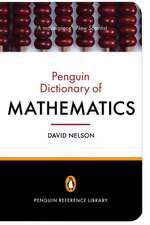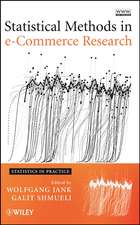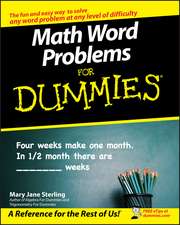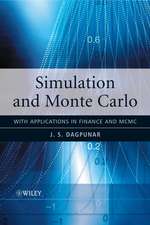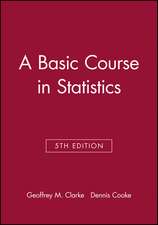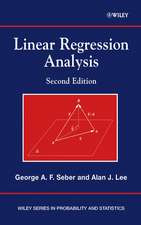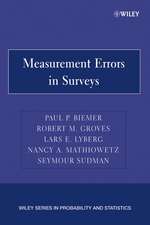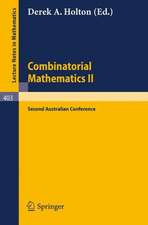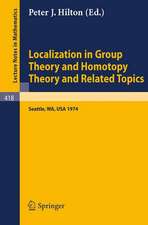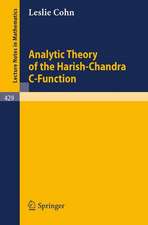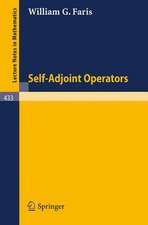The Mathematics of Fluid Flow Through Porous Media
Autor MB Allenen Limba Engleză Hardback – 23 aug 2021
Preț: 774.77 lei
Preț vechi: 851.40 lei
-9% Nou
Puncte Express: 1162
Preț estimativ în valută:
148.30€ • 161.14$ • 124.65£
148.30€ • 161.14$ • 124.65£
Carte tipărită la comandă
Livrare economică 21 aprilie-05 mai
Preluare comenzi: 021 569.72.76
Specificații
ISBN-13: 9781119663843
ISBN-10: 1119663849
Pagini: 224
Dimensiuni: 152 x 229 x 14 mm
Greutate: 0.47 kg
Editura: Wiley
Locul publicării:Hoboken, United States
ISBN-10: 1119663849
Pagini: 224
Dimensiuni: 152 x 229 x 14 mm
Greutate: 0.47 kg
Editura: Wiley
Locul publicării:Hoboken, United States
Cuprins
Preface xiii
1 Introduction 1
1.1 Historical setting 1
1.2 Partial differential equations (PDEs) 2
1.3 Dimensions and units 5
1.4 Limitations in scope 6
2 Mechanics 9
2.1 Kinematics of simple continua 9
2.1.1 Referential and spatial coordinates 9
2.1.2 Velocity and the material derivative 12
2.2 Balance laws for simple continua 13
2.2.1 Mass balance 14
2.2.2 Momentum balance 16
2.3 Constitutive relationships 20
2.3.1 Body force 21
2.3.2 Stress in uids 22
2.3.3 The Navier-Stokes equation 23
2.4 Two classic problems in uid mechanics 25
2.4.1 Hagen-Poiseuille ow 26
2.4.2 The Stokes problem 28
2.5 Multiconstituent continua 30
2.5.1 Constituents 30
2.5.2 Densities and volume fractions 32
2.5.3 Multiconstituent mass balance 35
2.5.4 Multiconstituent momentum balance 37
3 Single-Fluid Flow Equations 39
3.1 Darcy's law 39
3.1.1 Fluid momentum balance 41
3.1.2 Constitutive laws for the uid 41
vii
viii CONTENTS
3.1.3 Filtration velocity 44
3.1.4 Permeability 45
3.2 Non-Darcy ows 46
3.2.1 The Brinkman law 46
3.2.2 The Forchheimer equation 48
3.2.3 The Klinkenberg effect 49
3.3 The single-uid ow equation 50
3.3.1 Fluid compressibility and storage 51
3.3.2 Combining Darcy's law and the mass balance 52
3.4 Potential form of the ow equation 52
3.4.1 Conditions for the existence of a potential 53
3.4.2 Calculating the scalar potential 54
3.4.3 Piezometric head 56
3.4.4 Head-based ow equation 57
3.4.5 Auxiliary conditions for the ow equation 59
3.5 Areal ow equation 61
3.5.1 Vertically averaged mass balance 62
3.5.2 Vertically averaged Darcy's law 65
3.6 Variational forms for steady ow 66
3.6.1 Standard variational form 67
3.6.2 Mixed variational form 68
3.7 Flow in anisotropic porous media 70
3.7.1 The permeability tensor 70
3.7.2 Matrix representations of the permeability tensor 71
3.7.3 Isotropy and homgeneity 74
3.7.4 Properties of the permeability tensor 74
3.7.5 Is permeability symmetric? 77
4 Single-Fluid Flow Problems 81
4.1 Steady areal ows with wells 81
4.1.1 The Dupuit-Thiem model 81
4.1.2 Dirac _ models 85
4.1.3 Areal ow in an infinite aquifer with one well 88
4.2 The Theis model for transient ows 91
4.2.1 Model formulation 91
4.2.2 Dimensional analysis of the Theis model 92
4.2.3 The Theis drawdown solution 95
4.2.4 Solving the Theis model via similarity methods 97
4.3 Boussinesq and porous medium equations 102
4.3.1 Derivation of the Boussinesq equation 104
CONTENTS ix
4.3.2 The porous medium equation 107
4.3.3 A model problem with a self-similar solution 108
5 Solute Transport 115
5.1 The transport equation 115
5.1.1 Mass balance of miscible species 116
5.1.2 Hydrodynamic dispersion 117
5.2 One-dimensional advection 121
5.2.1 Pure advection and the method of characteristics 122
5.2.2 Auxiliary conditions for first-order PDEs 125
5.2.3 Weak solutions 126
5.3 The advection-diffusion equation 128
5.3.1 The moving plume problem 129
5.3.2 The moving front problem 131
5.4 Transport with adsorption 135
5.4.1 Mass balance for adsorbate 136
5.4.2 Linear isotherms and retardation 137
5.4.3 Concave-down isotherms and front sharpening 138
5.4.4 The Rankine-Hugoniot condition 141
6 Multiuid Flows 147
6.1 Capillarity 148
6.1.1 Physics of curved interfaces 148
6.1.2 Wettability 152
6.1.3 Capillarity at the macroscale 154
6.2 Variably saturated ow 157
6.2.1 Pressure head and moisture content 157
6.2.2 The Richards equation 159
6.2.3 Alternative forms of the Richards equation 161
6.2.4 Wetting fronts 163
6.3 Two-uid ows 164
6.3.1 The Muskat-Meres model 164
6.3.2 Two-uid ow equations 166
6.3.3 Classification of simplified ow equations 167
6.4 The Buckley-Leverett problem 170
6.4.1 The saturation equation 170
6.4.2 Welge tangent construction 173
6.4.3 Conservation form 178
6.4.4 Analysis of oil recovery 179
6.5 Viscous _ngering 182
x CONTENTS
6.5.1 The displacement front and its perturbation 184
6.5.2 Dynamics of the displacement front 187
6.5.3 Stability of the displacement front 188
6.6 Three-uid ows 190
6.6.1 Flow equations 191
6.6.2 Rock-uid properties 193
6.7 Three-uid fractional ow analysis 195
6.7.1 A simplified three-uid system 195
6.7.2 Classification of the three-uid system 197
6.7.3 Saturation velocities and saturation paths 199
6.7.4 An example of three-uid displacement 202
7 Flows With Mass Exchange 207
7.1 General compositional equations 208
7.1.1 Constituents, species, and phases 208
7.1.2 Mass balance equations 210
7.1.3 Species ow equations 211
7.2 Black-oil models 213
7.2.1 Reservoir and stock-tank conditions 213
7.2.2 The black-oil equations 214
7.3 Compositional ows in porous media 217
7.3.1 A simplified compositional formulation 217
7.3.2 Conversion to molar variables 218
7.4 Fluid-phase thermodynamics 220
7.4.1 Flash calculations 221
7.4.2 Equation-of-state methods 222
Appendices 225
A Dedicated Symbols 227
B Useful Curvilinear Coordinates 229
B.1 Polar coordinates 229
B.2 Cylindrical coordinates 230
B.3 Spherical coordinates 233
C The Buckingham Pi theorem 235
C.1 Physical dimensions and units 235
C.2 The Buckingham theorem 236
CONTENTS xi
D Surface Integrals 239
D.1 Definition of a surface integral 239
D.2 The Stokes theorem 241
D.3 A corollary to the Stokes theorem 241
Bibliography 244
Index 259

